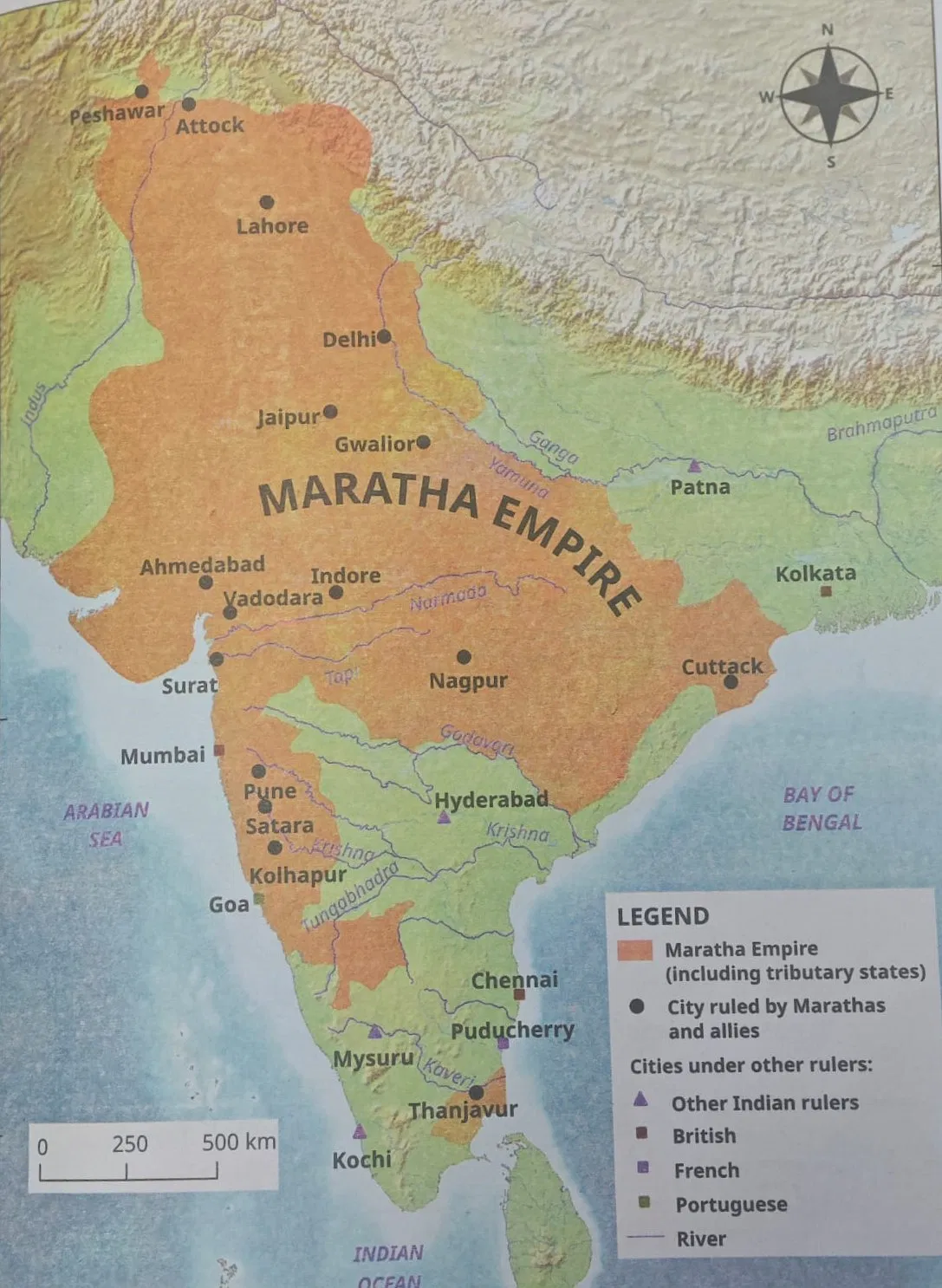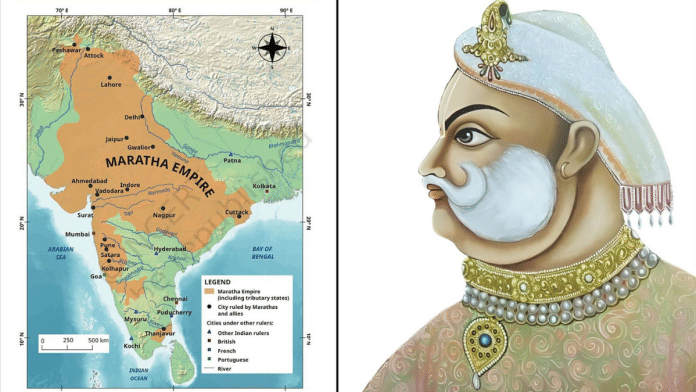Gurugram: A row has erupted in Haryana over a map in the NCERT’s 2025 Class 8 social science textbook, which shows the Bharatpur Jat state—once a powerful force under Maharaja Surajmal—and the entire modern-day Haryana as being part of the Maratha Empire in 1759.
The map has led to accusations of “historical manipulation” and “gross injustice” to the history of Bharatpur and the people of Haryana. Some historians and community leaders called for a correction in the map, reigniting the debate on the alleged politicisation of Indian history in schoolbooks.
Congress MP from Rohtak Deepender Singh Hooda also raised the issue in a scathing post on X, terming the map “utterly false” and an insult to Maharaja Surajmal, whom he called a “symbol of India’s self-respect”.
Hooda claimed that Bharatpur, which was an independent state ruled by Jat warrior-king Surajmal between 1755 and 1763, was never under the control of the Marathas.
महाराजा सूरजमल सिर्फ भरतपुर के नहीं, पूरे भारत के स्वाभिमान थे। सरकार (NCERT) द्वारा प्रकाशित स्कूली बच्चों की इतिहास की किताब (2025 संस्करण) में सन 1759 के इस नक्शे में भरतपुर रियासत का नामोनिशान मिटा दिया गया है और भरतपुर समेत आज के पूरे हरियाणा को मराठा साम्राज्य के अंतर्गत… pic.twitter.com/V8vwvhpnm9
— Deepender Singh Hooda (@DeependerSHooda) August 9, 2025
“The removal of Bharatpur’s identity from NCERT’s map is either a serious injustice to history or a conscious conspiracy to misinterpret it,” he wrote, tagging Union Education Minister Dharmendra Pradhan and requesting immediate action.
Hooda also elaborated on Maharaja Surajmal’s contribution in the Third Battle of Panipat (1761), for which he joined hands with the Marathas against Afghan intruder Ahmad Shah Abdali, Hooda said.
He added that following the defeat of the Marathas, Maharaja Surajmal provided shelter to injured soldiers and women and ensured their safe return. He claimed that Maratha leader Sadashivrao Bhau also took refuge in Haryana’s Sanghi village, where his tomb, ‘Bhau ka Maqbara,’ exists now.
Talking to The Print on Monday, Hooda said, “This map is an insult to Maharaja Surajmal and the people of Haryana who provided unprecedented assistance to the Marathas after the Panipat (defeat).”
“Surajmal established camps to treat wounded soldiers and dispatched his horsemen to escort Maratha women home safely. That is why you have Haryanvi colonies around Pune even today,” he said.
He emphasised Bharatpur’s sovereignty up to 1948, when at the behest of his grandfather Chaudhary Ranbir Singh Hooda and then home minister Sardar Vallabhbhai Patel, Maharaja Brijendra Singh merged the state with India, determining its placement in Rajasthan, not Uttar Pradesh.

Balwant Singh Phogat, a two-time president of the Phogat Khap, condemned what he called
the NCERT’s efforts to “distort” history. He demanded an immediate correction of the map.
“We have been living in Haryana since our birth and got our education in the state. Never ever we heard that Marathas ruled Haryana. Ever since the BJP has come to power, new and unheard of revelations are being made about our history which is condemnable,” he told ThePrint.
Interestingly, the same map also enraged Rajasthan’s erstwhile royal clans such as those in Jaisalmer, Mewar, Bundi, and Alwar. They claimed that their independent states have been equally misrepresented as Maratha countries.
Historians are not unanimous on the question about the complex power equation of 18th-century India.
“Haryana never belonged to the Maratha Empire, and Bharatpur was an independent Jat state,” Dr Dharambir Sirohi, Associate Professor of Modern Indian History and Department Chairman at Kurukshetra University, told The Print.
If the map by the National Council of Educational Research and Training (NCERT) indicates otherwise it’s absolutely wrong and needs to be corrected, he said, insisting Bharatpur remained an independent state even after India’s independence, being merged only in 1948.
But Dr Suraj Bhan Bhardwaj, a medieval history specialist and retired principal of Delhi University’s Motilal Nehru College, has a different take. “While Bharatpur and Haryana were never under direct Maratha rule, parts of Haryana, including Sikh states like Jind, paid ‘chauth’—a quarter of their revenue—as tribute under the Maratha ‘Sardeshmukhi’ system.”
Bhardwaj said Marathas stationed tax collectors, or aadils, in regions like present-day Gurugram and Mewat, with figures like Samru Begam overseeing collections in Gurugram and Jhajjar. “True, the Marathas never ruled these regions, but their power through taxation was immense,” he added, concurring that Maharaja Surajmal helped Maratha troops from Gwalior following the battle of Panipat.
While the NCERT announced a review committee headed by its curriculum head Professor Ranjana Arora, ThePrint’s attempt to reach its director Professor Dinesh Prasad Saklani through calls and email for a comment did not yield a result. This report will be updated if and when a response is received.
(Edited by Ajeet Tiwari)






